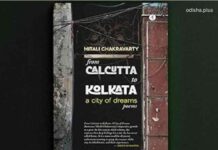Bhaskar Parichha

‘When Malthus famously outlined the brutal relationship between food and population, he never imagined the success of modern agriculture. New seeds, chemicals, and irrigation, coupled with free trade, drove the greatest global population boom in history—but left ecological devastation and an unsustainable agro-economic status quo in their wake. Now, with a greater number of mouths to feed than ever before, tightening global food supplies have spurred riots and reform around the world.’ – reads the blurb of this thought-provoking book.
Joel K. Bourne Jr who is currently a Contributing Writer at National Geographic, where he has worked since 2000 has a Bachelor’s degree in Agronomy from North Carolina State University, and a Master’s in Journalism from Columbia University. This mix has significantly enabled him to write a book on as important as an issue as food.
‘The End of Plenty: The Race to Feed a Crowded World’ is captivating because Bourne takes the readers on a long itinerary – from his family farm to international agricultural hotspots. In between, he visits young corporate farmers trying to restore Ukraine as Europe’s breadbasket. Then a stopover at the Canadian aquaculturist channeling ancient Chinese traditions meets the agronomist behind the world’s largest organic sugar-cane plantation, and many other people and groups, large and small, who are racing to avert a Malthusian calamity.
Part history, part reportage, part advocacy, ‘The End of Plenty’ is a wake-up call for anyone concerned with what the coming decades will hold for our planet and its inhabitants if we don’t get into action now. The essence of this four-hundred-page book lies in the search for new solutions to food that can sustainably feed us all.
In the first part of the book, Bourne examines the legacy of Malthusian theory, which says population growth is potentially exponential while the growth of the food supply is linear. The implication of this is mass death unless there were anticipatory checks.
He provides a synopsis of the mid-20th-century green revolution in various countries including India (Punjab) and the spectacular achievements of its “miracle grains.”But he also underlines the involuntary consequences including reckless use of water and the environmental and health effects of high levels of agrichemicals.
The green revolution, according to Bourne, came with heavy social costs since the bulk of the benefits flowed to larger landowners, while improved mechanization and monocultures reduced the need for farm labor thereby triggering an outflow of the peasant class to cities. Bourne tells painful stories of this unanticipated human toll, such as the wave of suicides that shook rural India where, on average, a small farmer committed suicide every 32 minutes during the past decade and a half.
In the second part of the book, Bourne strikes a more optimistic note, pointing to new initiatives that might mitigate past mistakes or tap undeveloped or under-utilized resources. For example, he categorizes substantial aquifers in India and Africa that could be used sustainably and explores opportunities for increasing water-use efficiency and equity of access through improving micro-irrigation for small-plot farmers.
Bourne has clear ethical positions: he is neither political nor polemical. He offers an in-depth examination of crucial agricultural challenges, demonstrating a finely sharpened balance between sweeping observations and informative examples. Bourne makes agronomy and its pioneers, critics and attendant industries come alive. He recommends his insights to government leaders, NGO activists, academics, and anyone interested in the availability of food or water.
Most instructive in the book is the fresh observation that Bourne makes on the oft-maligned GMO (genetically modified organism) breeding technologies, which have the potential to improve nutrition for billions of the world’s hungry despite widespread fears about possible health hazards. These foods include “scuba rice” which can tolerate extended flooding and “golden rice” that produces the vital micronutrient vitamin A. He also discusses the development of nitrogen-fixing grasses to replace harmful chemical fertilizers and explores opportunities for concentrated meat production and aquaculture.
Although these projects look encouraging, they can only make a serious dent in world hunger if it is long-term, integrated and holistic in approach. To increase food supplies on a planet and making it sustainably for producers and consumers is doubly challenging.
In order to achieve this goal, Bourne insists that we must first look at the eradication of the root cause of the population explosion—the lack of empowerment of women. Investments in education for girls, access to family planning information, and increased equity in resource access are more fundamental for feeding future populations than relying on technological innovation to increase production.
The book is a fascinating and serious overview of the present state of agriculture and food security in the whole world. He says that besides science business and politics also influence the planet’s ability to feed its rapidly increasing population sufficiently.
‘The End of Plenty’ is replete with studies, statistics and facts gathered over half-a-century. The mass of cold data is persuasively interwoven with splendid details and metaphors. Bourne’s book serves as a call to action, as the day of reckoning has never looked more real than now.

























